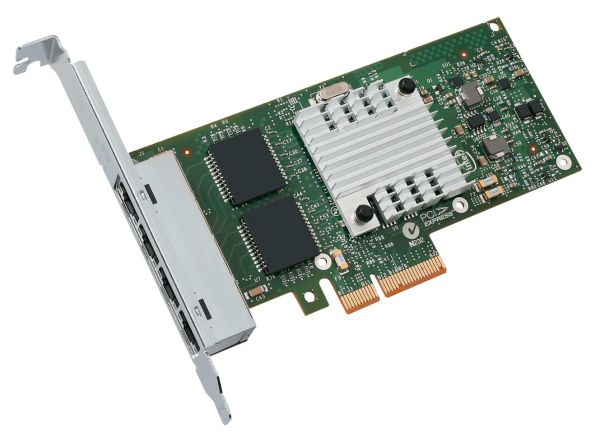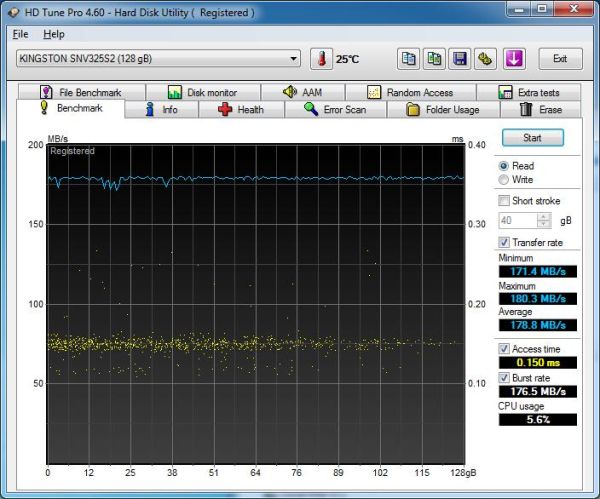Synology DS211+ SMB NAS Review
by Ganesh T S on February 28, 2011 3:50 AM EST- Posted in
- IT Computing
- NAS
- Synology
For the purpose of NAS reviews, we have setup a dedicated testbed with the configuration as below. The NAS is directly connected to the testbed (using as many Cat 5E cables as there are ports on the NAS) without a switch or router inbetween. This is done in order to minimize the number of external factors which might influence the performance of the system.
| NAS Benchmarking Testbed Setup | |
| Processor | Intel i5-680 CPU - 3.60GHz, 4MB Cache |
| Motherboard | Asus P7H55D-M EVO |
| OS Hard Drive | Seagate Barracuda XT 2 TB |
| Secondary Drive | Kingston SSDNow 128GB |
| Memory | G.SKILL ECO Series 2GB (1 x 2GB) SDRAM DDR3 1333 (PC3 10666) F3-10666CL7D-4GBECO CAS 7-7-7-21 |
| PCI-E Slot | Quad-Port GbE Intel ESA-I340 |
| Optical Drives | ASUS 8X Blu-ray Drive Model BC-08B1ST |
| Case | Antec VERIS Fusion Remote Max |
| Power Supply | Antec TruePower New TP-550 550W |
| Operating System | Windows 7 Ultimate x64 / Ubuntu 10.04 |
| . | |
In addition to the Realtek GbE NIC on-board the Asus P7H55D-M EVO, four more GbE ports are enabled on the system, thanks to the Intel ESA-I340 quad port GbE ethernet server adapter . With a PCI-E x4 connector, the card was plugged into the PCI-E x16 slot on the Asus motherboard.
Since the Synology DS211+ has only 1 GbE port, there was no need to team the four ports in the ESA-I340.
Intel NASPT is used to benchmark the NAS device. In order to ensure that the hard disk transfer rate is not a bottleneck, NASPT is run from the secondary drive in the testbed (the Kingston SSD). With average read and write speeds of 178.8 MB/s and 167.8 MB/s, it is unlikely that a single GbE link NAS can be limited in performance due to the test system. However, a link aggregated NAS could be affected. Fortunately, as we will see in the next few sections, this wasn't the case for the 5big storage server.
All file copy tests were also performed using the SSD. The file copy test consists of transferring a 10.7 GB Blu-Ray folder structure between the NAS and the testbed using the robocopy command in mirror mode (on Windows) and the rsync -av command (on Linux).
There are three important sharing protocols we investigated in the course of our evaluation of the DS211+. In the next few sections, you will find NASPT and/or robocopy/rsync benchmarking results for Samba, NFS and iSCSI sharing protocols. Each section also has a small description of how the shares were set up on the NAS. The NASPT benchmarks were run in Batch mode thrice, giving us 15 distinct data points. The average of these 15 values is recorded in the graphs presented in the following sections. The robocopy and rsync benchmarks were run thrice, and the average transfer rate of the three iterations is presented alongside the NASPT benchmarks.













49 Comments
View All Comments
mino - Monday, February 28, 2011 - link
Power consumption aside, the value of an off-the-shelf NAS is in the software stack.Had any of us enthusiasts started to bill ourselves for the time spend setiing up a DYI box the price comparison would start looking VERY different ...
bobbozzo - Tuesday, March 1, 2011 - link
True, but it doesn't take that long to install FreeNAS or OpenFiler.KLC - Monday, February 28, 2011 - link
I don't understand why these NAS boxes are so expensive. A year ago I bought an Acer home server that had an Atom cpu, 4 hot swappable drive bays, the WHS OS and one 1 tb drive for $350.Jambe - Monday, February 28, 2011 - link
I'd love to see more NAS reviews like this, particularly in the $2-500, 2-drive arena where there are so many competing products!Hrel - Tuesday, March 15, 2011 - link
I started looking into and either you have to pay obscene amounts of money or you have to suffer through 10MBPS max transfer speeds with glitchy software... based on newegg user feedback. I couldn't find a decent system with good reviews for 300 or less. I want 2 2TB hard drives in RAID 1; 300 is the most that's worth.Since no one is offering a system like that I'm just turning an old P4 system into a NAS using FreeNAS, a PCI RAID card and two 2TB WD Hard Drives, total cost... 220.
caragon80 - Wednesday, October 26, 2011 - link
I am considering buying a NAS Server for my home and I need your advice and some recommendations please. I prefer a NAS setup for several reasons, namely:1. I like the RAID concept. It affords the best data protection option in the event of hard drive failure.
2.I need a lot of storage space since I will be making a lot of HD quality videos (I make short movies as a hobby).
3.I need media server functionality in order to stream my music and video files to my TV and other devices throughout the house.
4. I would like to have my own personal cloud setup, one that will allow me to access my data from anywhere in the world via a browser.
5. I also need a reliable storage option that is capable of doing automated back-ups.
I am sure there are other important functions that a NAS can be used for, but these are the ones that are most important to me. With this said, I would love to hear your thoughts on the following technical considerations:
1. Will a 2-Bay setup suffice or should I consider 4-bays so I can have a RAID5 setup instead?
2. What is the difference between a RAID1 and a RAID5?
3. In a 2-Bay setup I was thinking of buying two 2TB drives for a total of 4TB in RAID0 or 2TB in RAID1. What do you think about this setup?
4. What processor speed should I be considering for the NAS? 800hz? 1Ghz? 1.6Ghz dual core?
5. How about system memory? I noticed the NAS Servers in the market can vary greatly in this regard. Some have as little as 128MB and go up to 1GB. How much do I really need?
6. What brands should I be considering? From what I have read Synology and QNAP make the best NAS Servers and have the best user friendly software. What brands do you recommend and what models within those brands do you think would be most appropriate for my home given what I have stated above?
Any feedback and/or recommendations you can provide would be greatly appreciated. Thanks.
Blimundus - Thursday, January 26, 2012 - link
Home use NAS reviews always make me *want* to add a NAS to my own setup. I have never really felt the *need* for a NAS. Although I have several computers, only the main Ubuntu desktop is used on a daily basis, and there is automatic backup to an external harddisk.In other words, if I would buy a NAS, I would not care much for capacity or performance, I just want to play with the possibilities it offers. That is why I am thinking of getting an entry level system: the single bay DS111. (There does not seem to be a DS112 model?)
I can see that a dual bay system would have certain advantages (capacity, redundancy). Those advantages are not very important to me.
I am hesitant about buying a single bay system for another reason: upgrade flexibility. If I ever replace the hard disk, or if I move to another system, will I have difficulties doing so if I have a single bay system? Or will I be able to do this by moving the data (temporarily) to another external hard disk, or even by linking up the old (single bay) NAS with the new (single or multi bay) NAS?
flight553 - Tuesday, July 31, 2012 - link
Since Sept 2011 when NAS manufacturers started switching to the updated version of AppleTalk, and how this has annecdotally affected people running OSX10.7 Lion or higher, AFP protocol seems to be faster than SMB now. For me, a share through AFP was twice as fast as the same one via SMB.qhldbhywjuxh - Monday, August 24, 2020 - link
http://bitly.com/zoom-viber-skype-psy